I have seen a few people show surprise, shock, or just plain disbelief after I told them my African cichlid tanks have plants in them. Yes, real plants. And quite a few of them, too. Maybe they arent the green explosions some CAS members manage to produce, but my plants have at least grown to the point where its a trifle difficult to see all the way to the tanks back.
I now have two 185-liter and two 80-liter planted African cichlids tanks. If you are wondering how you can grow plants with such notorious vegetarians as African cichlids, the answer is that not all African cichlids are the same, and not all plants are the same either. So, after a little trial and error, Ive been able to hit upon a combination of plants and fish that keeps the plants away from the fishes digestive systems.
One of my 185-liter tank has about one dozen Pseudotropheus zebra and Pseudotropheus socolofi, along with a 25cm sailfin plecostomus. Most of the African cichlids reputation as plant destroyers is due to the activities of these mbuna and their relatives. These guys are omnivorous; in the wild they eat mostly algae (and any critters living in the algae) from the rocks of Lake Malawi. The plecostomus is from South America and is a purely vegetarian algae-eater. The cichlids and the pleco will devour soft plants; in fact they are fed regularly on par-boiled zucchini slices (their favourite food). Most of the living plants Ive tried to keep with them were also eaten, but Ive found one that they leave alone: jungle val (Vallisneria spiralis). One side of the tank has a thick stand of val planted in individual clay flowerpots.
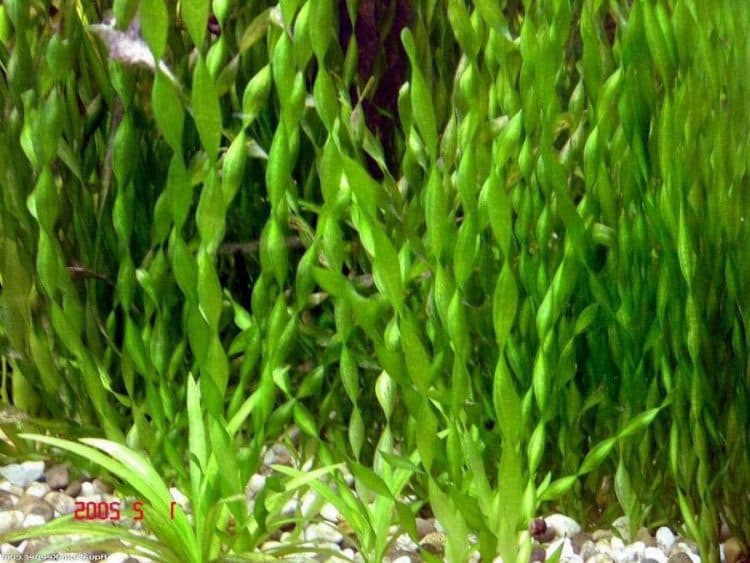
I found it absolutely necessary to pot the plants. If the plants were not potted, they were uprooted on a continuous basis. I use small red clay pots (they are available everywhere). A pebble is jammed into the pots drainage hole to keep everything from falling out the bottom. I then put in an couple of centimetres of peat moss mixed with a pinch of “micronized iron” (very fine iron filings). The pot is then filled with normal aquarium gravel. The val is planted quite thickly (it doesnt seem to mind crowding) because if any bare gravel were visible in the pots, the mbuna would pick at it until the plants were uprooted.
The tank is illuminated by three 3 foot fluorescent tubes of the Philips Colour 84 variety. The tank is therefore brightly lit, but the val has covered almost all of the tank surface, effectively shading the tank. I must admit that the light filtering through the plants gets a rather unpleasant greenish cast, but I can live with that. I also have to admit that I dont particularly like val (it reminds me of crab-grass), but so far, thats all Ive been able to grow in this tank.
Algae is at a bare minimum in this tank, despite the high illumination and the heavy fish population. The fish eat it as fast as it grows. Twenty liters of water are also changed daily to keep nitrate levels down. Every week I add a chelated iron supplement and a little potassium chloride to the tank.
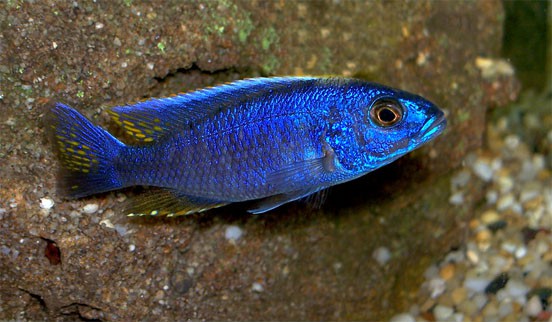
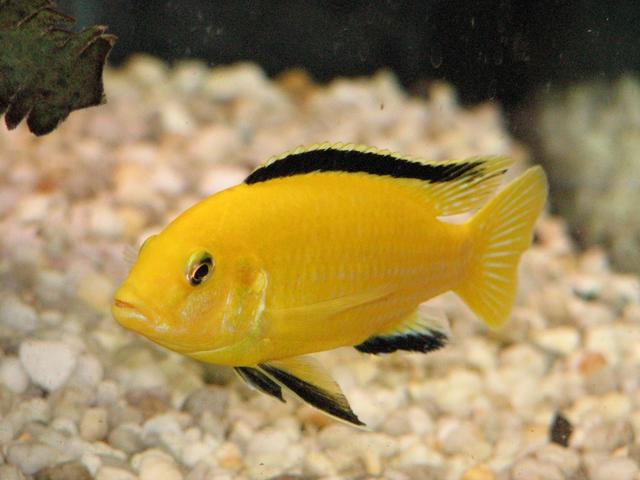
My other 185-liter tank has six electric blues (Sciaenochromis fryeri, formerly known as “Haplochromis ahli”), six electric yellows (Labidochromis caerulus), and six Kande Island peacocks (Aulonocara kandenis). These fish are carnivores and will not eat even the softest plants (they turn their noses up at zucchini too). This tank is planted with temple plants (Nomophila stricta) and Cabomba species. These plants are also potted and are growing so well that Ive been continuously removing rocks to make room for more pots.
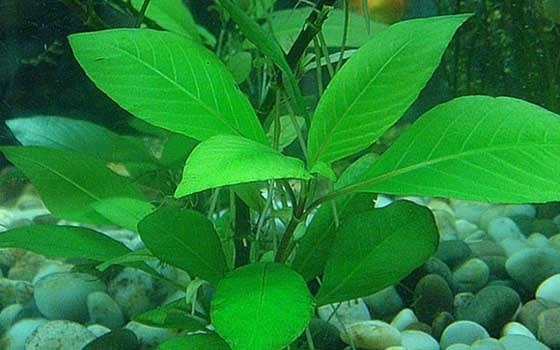
This tank has some brown algae, probably because it has no plecostamus (they love to eat temple plants). The tank is also relatively dim, having just two fluorescent tubes. Brown algae is supposed to like dim light, but the situation seemed to just get worse when more light was added. I have controlled its growth by changing 40 liters of water daily. African cichlids are robust and gluttonous and produce a lot of waste, so I would strongly recommend massive water changes to keep nutrient levels down. If this is not done, any tank with adequate illumination for plants will be overrun with algae. This may seem like a lot of work, but Ive worked out a system where I can change 40-liters of water in just a few minutes.
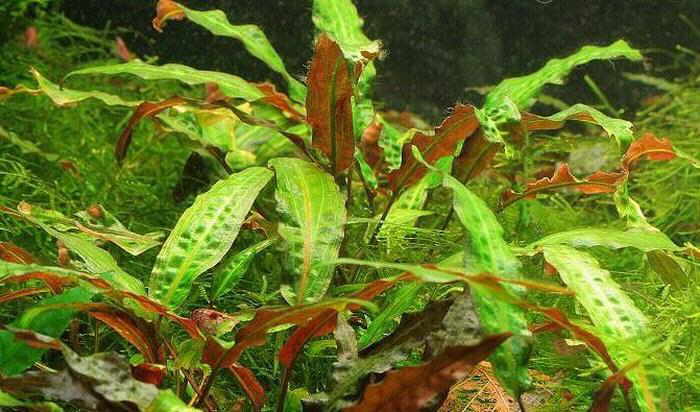
My two 80-liter tanks are for fry. They are planted with Cryptocoryne affinis and Amazon sword plants (Echinodorus sp.) The crypts have always done well, while my success with the sword plants has been spotty. Right now, theyre all doing great, but they could probably all die back by next week.
The plant pots are about 10cm tall, so they are quite difficult to bury in gravel. I therefore arranged the rocks around the pots so they are kept hidden. The pots also create little crevices and caves for the fish to live in, so they dont mind the arrangement at all. I have finally removed all the gravel from my tanks, leaving the rocks and plant pots sitting on bare glass. I found this system works very well; it is much easier to keep clean and the fish cannot undermine the rockwork. There are so many rocks and pots in my tanks that the bare floors cannot be seen, so the gravel isnt missed.
So if you want to keep plants with African cichlids, it can be done, but I have the following bits of advice: put your plants in pots; change lots of water; and most importantly, learn about the diets of your fish before purchase and only choose the toughest plants to live with those dreaded vegetarians.
Leave a Reply